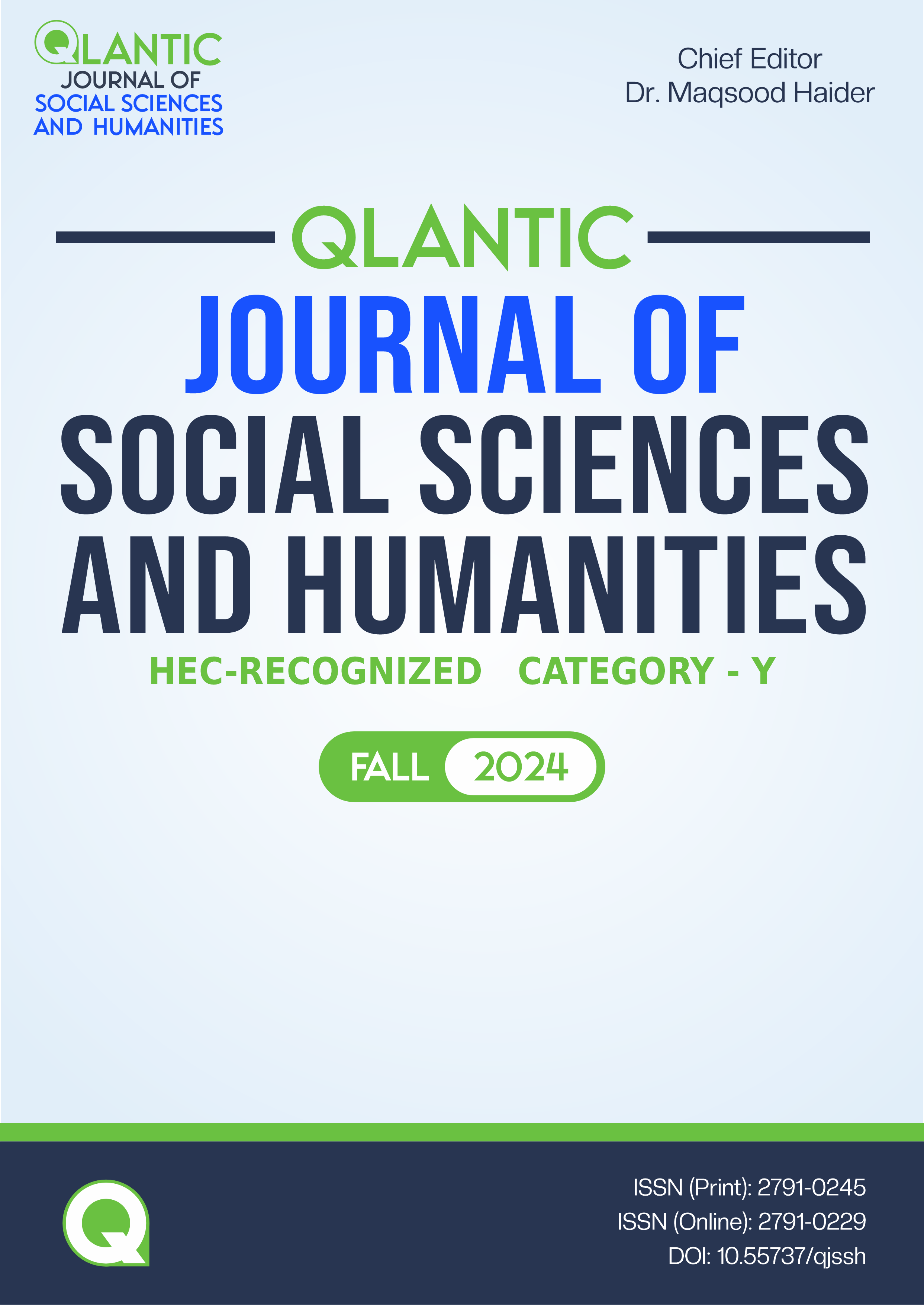Islamophobia and Media Discourse: A Critique of American and Pakistani Newspaper Article's Discourses
DOI:
https://doi.org/10.55737/qjssh.130457568Keywords:
Critical Discourse Analysis, Islamophobia, Pakistani and American NewspaperAbstract
Media Discourse explores the interactions occurring on broadcast platforms and is pivotal in global news dissemination. It also can propagate divergent viewpoints aligned with prevailing power structures. A comprehensive approach involving qualitative and quantitative methods addressed these aspects. Fairclough's Sociocultural Approach of Critical Discourse Analysis was applied for a critical qualitative examination, while a questionnaire was developed for quantitative analysis. The qualitative analysis involved three stages: characterization, understanding the relationship between message and communication, and elucidating the connection between communication and social context. Specifically, "USA Today" and "Dawn" were selected as representatives of American and Pakistani newspapers, respectively. For the quantitative phase, a random sample of 50 respondents completed the questionnaire, and the data were analyzed using SPSS software. The findings revealed discernible differences in the writing tone between the two newspapers, both contributing to the propagation of Islamophobia. Respondents exhibited a mix of positive and negative reactions to the questionnaire, reflecting varied perspectives on the media discourse under scrutiny.
References
Amina Muslim Women Resource Centre |. (2020). https://mwrc.org.uk/
Arshad, M., & Khan, N. (2021). A critical discourse analysis of the Pakistani newspaper headlines on the federal budget for FY 2021-2022. Journal of Humanities, Social and Management Sciences (JHSMS), 2(1), 176–186. https://doi.org/10.47264/idea.jhsms/2.1.15
Bergen, P. L. (2018). September 11 attacks. In Encyclopædia Britannica. Britannica. https://www.britannica.com/event/September-11-attacks
Fairclough, N. (2013). Critical discourse analysis. In The Routledge handbook of discourse analysis (pp. 9-20). Routledge.
Hassan, A. (2018). Language, Media, and Ideology: Critical Discourse Analysis of Pakistani News Bulletin Headlines and Its Impact on Viewers. SAGE Open, 8(3), 215824401879261. https://doi.org/10.1177/2158244018792612
Kress, G. (2008, November 19). Critical Discourse Analysis. Cambridge University Press.
Patel, D. (2020, March 31). Scope and Usage of Discourse Analysis as a Research Method in English. INTERNATIONAL JOURNAL FOR INNOVATIVE RESEARCH IN MULTIDISCIPLINARY FIELD, 6(3), 234-238. https://www.ijirmf.com/wp-content/uploads/IJIRMF202003042.pdf
Raj, R. (2016). Islamophobia, Racism and Critical Race Theory. International Journal of Safety and Security in Tourism and Hospitality. https://eprints.leedsbeckett.ac.uk/id/eprint/3489/
Sutkutė, R. (2019). media, stereotypes and muslim representation: world after jyllands-posten muhammad cartoons controversy. EUREKA: Social and Humanities, 6, 59–72. https://doi.org/10.21303/2504-5571.2019.001054
Wikipedia Contributors. (2019, October 14). Islamophobia in the media. Wikipedia; Wikimedia Foundation. https://en.wikipedia.org/wiki/Islamophobia_in_the_media
Downloads
Published
Issue
Section
License

This work is licensed under a Creative Commons Attribution-NonCommercial 4.0 International License.





